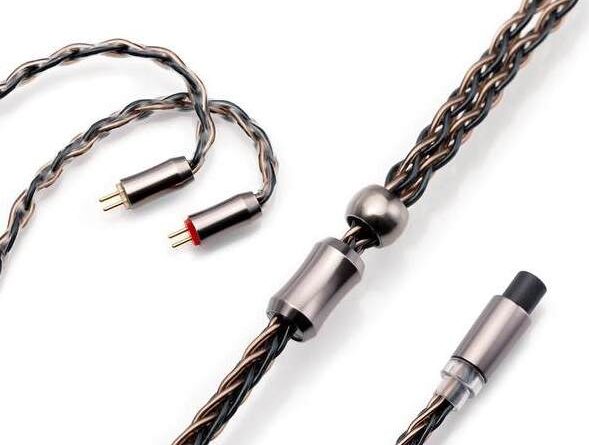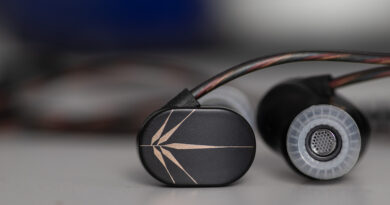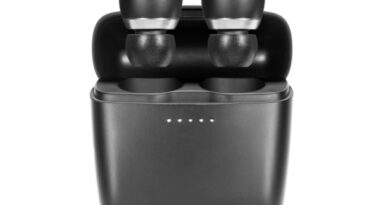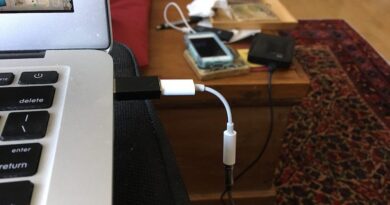Kinera Leyding .78mm 2 pin Cable Review – Better Living Through Science
Kinera Leyding: Elaborately boxed, $69 OFC copper/silver cable was sent to me by Hifigo as an upgrade to the stock (OCC) Hakugei cable on the See Audio Bravery (review here).
To the extent I ever think about cables, I’m a moderate—generally, I neither believe that all well-made cables sound the same nor that you can radically change an IEM’s tuning with a cable. I’ve also previously rejected as fantastical the notion that silver cables are brighter than copper or that heavier gauges are somehow better. However, the Leyding did have enough of a sonic impact that I’m starting to rethink some of my preconceptions.
The plastic-sheathed 8-core braided Kinera Leyding doesn’t look or feel especially luxe, except for its modular output design, which provides for detachable 2.5mm balanced, 3.5mm single-ended and 4.5mm balanced plugs. Build seems solid, with metal connectors and gold-plated plugs, but the 3.5mm plug is too stubby to fit in the protective case on my mobile (I had to use a M to F extender, which admittedly is not a great sacrifice). The cable does feel soft and supple around your ears, and (in contrast to the stock Bravery cable) is free from microphonics and awkward memory.
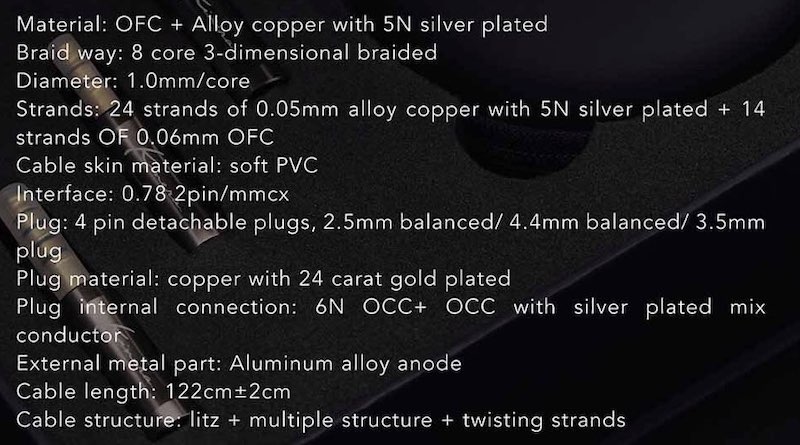
Contrary to my preconceptions, the Kinera Leyding very significantly changed the presentation of the SeeAudio Bravery. First and foremost, it boosted the volume considerably—while I leave measurements to my more technogeek colleagues, I hypothesize that the Leyding has lower impedance than the stock Bravery cable (less impedance=greater volume).
However, it also made the already-bright Bravery brighter and made the low end, which had somewhat slow decay with the stock cable, audibly tighter. Not all of these changes were favorable—guitar strings and female vox with the Leyding sounded a little more shrill/digital, albeit more detailed. Overall, however, the Kinera Leyding was an improvement.
Results with the ($49) KZ ZS10 Pro were less successful. Again, the phones sounded louder with the Leyding than with the stock copper cable (which is $9 on KZ’s website) and notes seemed weightier. However, the Kinera Leyding tended to bloat the bass to a painful level, which was better-controlled with the cheaper original.
With the Moondrop Kanas Pro, whose stock cable is thinner but also silver plated copper, the differences were much more subtle—I may have heard a bit more weight in the notes with the Leyding, but I can’t swear that there wasn’t some expectancy bias in play.
I’m happy to own the Kinera Leyding—the detachable plugs are useful gimmick, it’s very comfortable to wear and a definite enhancement to some phones. You could probably find an equivalent performer for less (though given its lavish presentation the Leyding seems fairly priced). Above all, it made me actually care about cables for the first time, which is worth something.
Disclaimer: gifted by and available from HifiGo. Thanks, guys and gals.
Our generic standard disclaimer.

